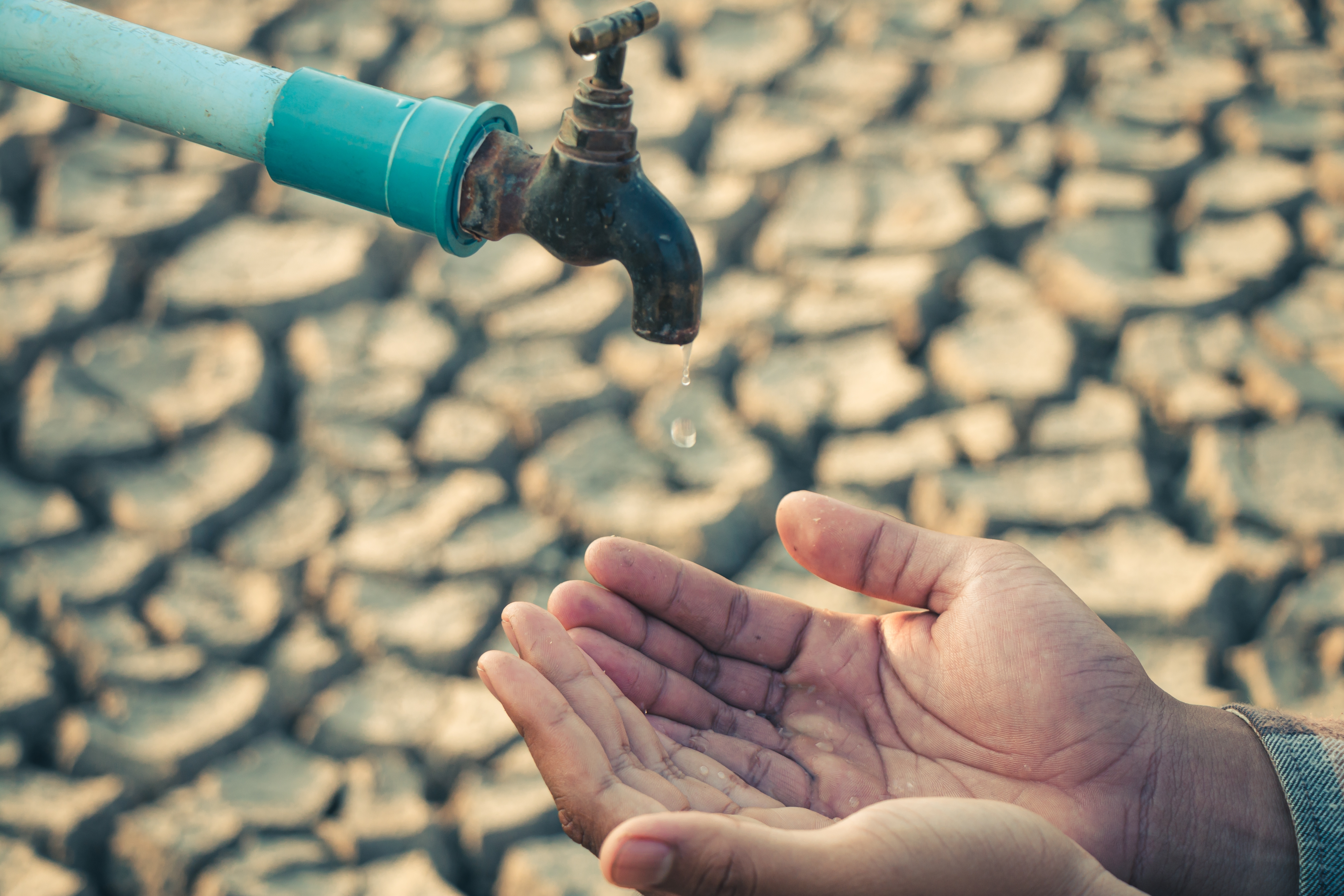Zimbabwe
Tackling the Bulawayo water crisis

Hand for drinking water to live through drought, Concept drought and crisis environment.
© ShutterstockBulawayo, Zimbabwe's second largest city, is currently facing one of its most severe droughts, exacerbated by the El Niño weather pattern. The city's vulnerability to drought has led to a severe water availability crisis, with increasing demand and decreasing supply. Over one million residents are facing acute water stress with limited access to clean and safe water. Despite the implementation of a 120-hour water-rationing plan in December 2023, the situation remains critical. Water levels in the city's reservoirs continue to fall, pushing residents to the brink of desperation. Proposed solutions such as boreholes and additional dams have failed to meet the needs of Bulawayo's 1.2 million residents. The water crisis is further exacerbated by aging water infrastructure, which has resulted in more than 48% of water sources being non-revenue, vandalism of equipment, centralisation of water management processes and illegal gold mining that diverts river flows, among other problems. If no action is taken, Bulawayo is expected to run out of water before the start of the next rainy season.
In a proactive move to deal with the effects of climate change and the water crisis, the Friedrich Naumann Foundation has announced a partnership with the City of Bulawayo to help the develop a water communication strategy. The FNF-led strategy aims to mobilise and engage all relevant stakeholders to work together to find sustainable solutions that will avert the impending water shortage, while developing long-term strategies to mitigate the crisis. In the short term, the government has pledged $14 million to rehabilitate old pipes and pumps. The city is not confident that the disbursement will be made soon, yet the city urgently needs to implement sustainable water management and infrastructure strategies to mitigate the crisis. The government's long-term Gwayi-Shangani project is not an immediate solution.
At this critical juncture, the Friedrich Naumann Foundation's partnership aims to contribute to the city's climate change mitigation and adaptation initiatives by supporting the development of a comprehensive water communication strategy. This strategy, to be developed in collaboration with key stakeholders, aims to raise awareness among the public, the government and the international community of the severity of the crisis, while mobilising stakeholders to find medium to long-term solutions. It will also seek to develop strategies to mobilise the city's resources for the construction of the Glass Block Dam, which will increase the city's water capacity by 70%. As the national government and city leaders grapple with finding sustainable solutions to the crisis, the Foundation's initiative will play a crucial role in coordinating efforts to alleviate Bulawayo's water scarcity. By promoting effective communication strategies, the partnership aims to empower the community, encourage water-saving behaviours and lay the foundations for a more resilient and water-secure future for the city, emphasising its role in increasing public awareness and engagement in addressing Bulawayo's water crisis.
Zimbabwe is facing one of its worst El Nino-induced droughts, with below-minimum rainfall across the country. On 19 April 2024, the President declared a state of emergency and appealed for $3 billion in local and international support for food aid and water infrastructure. The country is developing a legal framework to regulate and manage its climate change mitigation and adaptation framework.
